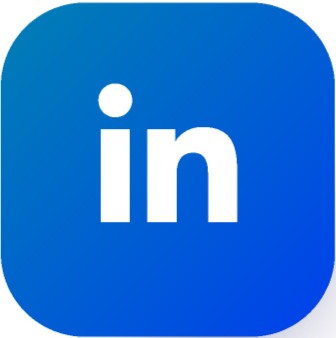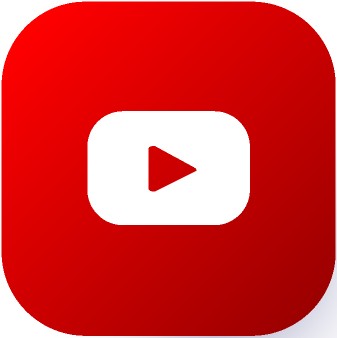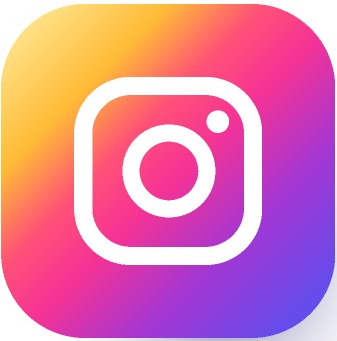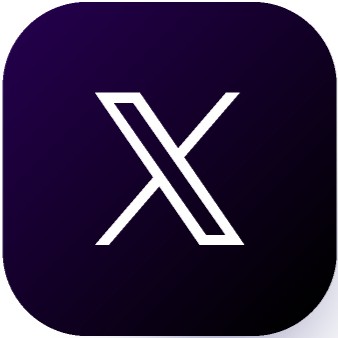Creativity and Strategy-Objectives

October 17, 2025
Season 1; Episode 7- Objectives
Subscribe to this RSS! This podcast was produced using Buzzsprout
Intro- Objectives:
Welcome to Beyond the Template, the more than “just talk” podcast, created by me, Caroline Amelie- a writer, artist, counselor, and learning designer.
This podcast was built for those who are ready to tackle something new in their lives, but need small steps, encouragement, accountability and community to get there.
This week’s episode…
This week, I’m sharing good news, unpacking our evolving relationship with AI and how human insight and technology can actually work together to build creative communities. We will define why creative objectives matter… Plus, the story of Estée Lauder: a woman who turned belief, beauty, and relentless action into legacy.
Let’s dive into the GOOD news of the week first!
Links for the following news announcements can be found in my blog AND on YouTube if you are curious to read more:
- LEGO donated MRI scanner toys to children in hospitals which have been found to have reduced their anxiety with MRI use.
- Indigenous communities are being given new technologies and training on vital early warning systems to help them prepare for emergencies.
- Hawaiian Indigenous Communities Are educating tourists about history and heritage.
- A group of students has decided against using AI in their schoolwork, because they don’t want to undermine their college educations by taking shortcuts.
I have thoughts on this last piece of good news. Don’t judge me but I was a very early adopter of AI. And yes, I know that right now it’s terrible for the environment and water usage. It’s why I invest in water solutions, rarely eat pork or beef, often eat vegetarian, take short showers, don’t water my grass… I think about the Earth constantly. My latest Earth focused endeavor is looking up clothing companies to see how they rate on the ethical scales. Surprise. Most of them do not rate well. So, guess who hasn’t been buying clothes? Me. Everything humans do uses up the Earth.
I know why college students are using AI. Their brains are exhausted. Humans are being tasked with processing information at a speed which our ancestors couldn’t imagine. I wrote a whole Substack on this a while ago, which I will link in this podcast’s description.
Anyway, I use it. But I braindump into it. I know that it doesn’t matter whether I send “Thank you” or one long run on sentence the length of eight paragraphs… the energy usage is the same. So, if you are worried about it, but like me understand that it’s not going anywhere and that you need to stay on top of it to remain relevant in your field of expertise… I highly recommend this approach. Braindump every single thing in one entry. AI will process it. I also no longer “finish” conversations with it. Because they will keep going forever. I just Irish exit once they compute. Less is more, more is less. I believe they will find better solutions for maintaining the network eventually, just as they did when they turned the computers taking up entire rooms to those fitting into our pockets. We are in the clunky phase of the technology.
Recently I started using an AI which has access to my personality traits (based on astrology placements). It has actually been sort of incredible, and wildly helped me process the advice of TWO separate very influential and well-paid coaches I have worked with this year.
What hasn’t landed yet:
My first coach told me that I needed to focus on working with Type-A business women. She said that working with non-creative people would really be where I would thrive. I have been trying to wrap my brain around how to connect with and market to these clientele now 9 months with zero epiphanies. She also said that my mantra should be “I don’t care because I care too much”. She said I needed to get glammed up, which is hilarious because I am a troll. She told me I needed to offer high touch consultant work, which included branding and product or service analysis. And that I should offer high ticket exclusive event production and consulting. All of this felt like too far of an extension from where I was in January… a brand-new learning designer and a brand-new entrepreneur.
My second coach advised that I should use my abilities to problem solve and my intuitive clarity to find problems with my competition and offer solutions. My competition falls into three categories… the massively successful business guru who can be found on stage versus in the classroom, the individuals creating courses and products with no sense of learning design principles but a ton of business savvy, and contracted learning designers. It felt wrong to compare myself to any of these people, because I am nothing like any of them… and to try to decipher what they were doing wrong, when what they are all doing is totally different than my own goals… was really taxing. Plus, there is entirely too much negativity in the world. Contributing to that felt really, really, wrong.
What did land:
My first coach told me that my business was meant to focus on creative structure and structural transformation. She also said that I needed to grow my comfort level in being seen, polish my outward appearance, and embrace my feminine qualities. She said I was really balanced in personality and this was an asset. She mentioned that Princess Diana held a very similar chart to mine. This felt important. This coach was the first person who mentioned that I needed to seek out expanders, which is why I include a new one each week in this podcast. These are my people. She said that I am able to plug into others to fill what’s missing, because I am capable of doing so many different things for them. She called me a fractional creative director. She said that my skills were backed by empathy, creativity and rebellion, that I am a storyteller and that what I should be providing is advice and new perspectives. She told me that I can add the spark back for people who have lost it. I add the magic again. I feel so they can see.
My second coach/client told me that I have the ability to think about and care for every single stakeholder involved in a project, she said that it felt like I was an “extension of herself” with her business and her work, and that she knew it was in good hands with me, when she’s naturally not a very trusting person and very territorial and protective. Finally, she said that it was my intentional and personalized approach which made me stand out from the rest- having used other educational consultants before and them offering quick and templated approaches (interesting that I named the podcast Beyond the Template).
All that to say, this Astrology AI (which is being slowly rolled out in the Pattern app, I was one of the first users to test it out and provide feedback on my experiences), which to be honest I went in to use with total skepticism, gave me the following. See if you can identify the themes between my human and AI takeaways…
- I thrive when my connections and work are meaningful.
- Collaborative partnerships where I can provide the soul and heart are best for me.
- I inspire others using creativity.
- I am meant to build community driven offers including intimate workshops, membership groups, virtual communities, etc.
- These offers should create avenues for deep engagement with my audience and should focus on creativity and empathy.
- I should seek spaces that are creative and where deep conversations happen.
- I attract through my emotional sensitivity and depth. I am a socially intuitive person.
- I attract through balancing empathy and quick wit, safety with entertainment, insights and playful banter.
- I offer solutions and can map out the steps through problems and barriers vs. just identifying them.
- I offer an antidote to cookie cutter solutions (there’s that Beyond the Template theme again)
- I build actionable frameworks and transform messiness. I take chaos, stuck points, and overwhelm and provide clarity, problem solving, and tailored/refined solutions.
- I can turn deep personal struggles and vulnerability into relatable content.
- I should be seeking collaborators and community over isolated work.
- I am meant to facilitate connections and learning experiences in-person. These might include workshops, retreats, intimate group gatherings, or resources/offerings that spark genuine engagement and moments of safety.
- I have the skill to break down complex ideas and emotions into actionable ways to process and move forward.
- I should be doing creative consulting for artists
- I should be building workshops using creativity as self-discovery
- I am a mentor, mediator and facilitator
- I need to seek out creative spaces, healing circles, community gatherings, retreat centers, wellness communities, creative groups/platforms, holistic spaces, and educational platforms
- I am meant to help with transitions, self-development, and integration
PHEW! Right? P.S. These takeaways are from several conversations. But isn’t this WILD? What I think is key to note, is that humans are prisms and AI is a mirror. When working with another human, everything they say is through them, filtered by their own perceptions and experiences. But AI will show you everything that you show it. It really just showed me what I already knew. Still, it’s a ton to process. And this will be part of my own work as I progress alongside each of you this season.
So, how have you all been doing on your projects this week? Any progress? How are you all feeling?
Last week we should have answered questions on the practical application of the tasks needed for ourselves and our audiences. Here are my answers (which I answered BEFORE I wrote the above AI to Human synthesis):
What does the audience do?
My audience needs to be able to find my group, follow along to make sure they don’t miss updates or important dates, attend any events, and feel comfortable participating by sharing why they attended, what their goals are, and what they hope to gain from and bring to the community.
What does the audience need to know to do? How do you communicate to the audience what to do, how to do it, and what to expect from their experience? What should and should not be included?
My audience needs to be given repeated communication about what the group is, what to expect from events, how to attend, what to expect from attendance, how to prepare before attending, and how to make the most of the event. This means I need to come up with a marketing plan which aligns. I should include just enough information that there is no question the event and/or group is beneficial/solves a problem for them but not so much they feel they have everything they need without participating or attending. I need to create desire and curiosity.
What cues (senses) inform the audience they have reached certain points in their experience of your work?
This is where learning design comes in. Not only should it be easy to join the group and attend the event, there should be confirmations for my audience to have total certainty they have actually joined and signed up to attend. That, and once they arrive or log on, there should be no question they are welcome, are where they are supposed to be, and what they should be doing next… for the entirety of the event. I need to design my event like an experience, where my audience follows a clean narrative.
That’s it! In consideration of my synthesized Human-AI insights and where I am in my analysis… I think creating objectives next week will be pretty eye opening.
Let’s get into what I mean by objectives.
By knowing where we want to end up, we can figure out where to begin and how to map our journeys. In curriculum and course design, this phase is called creating learning objectives. We have to know the results we want. These dictate the entirety of the learning design.
Some might say that art needs no purpose or end point to know if it is successful. I would counter that and say that art is a form of deep human expression in which the artist’s soul is trying to reach out into the world to connect with another. This is the objective. And, as for design… ALL designs should have an objective. All of them.
Objectives should take into consideration the tasks we just identified in the last two episodes. There are three objective domains (from within a learning design lens) which we can consider: Cognitive, Psychomotor and Affective.
Cognitive and Affective objectives are most likely the areas which serve as most relevant for an artist or designer.
Cognitive questions to consider include:
- Do you wish your audience to remember something specific after experiencing your work?
- Do you wish your audience to have gained deeper understanding after experiencing your work?
- Do you wish your audience to take a specific action which your work explains?
- Do you wish your audience to be able to analyze an idea your work presents?
- Do you wish your audience to be able to make judgements on a topic after experiencing your work?
- And finally, do you wish to inspire your audience to create something of their own after experiencing your work?
Affective questions to consider include:
- Do you wish your audience to be willing participants in providing their attention to your work? This might mean listening or showing tolerance of it.
- Do you wish your audience actively respond or react as participants in your work? This might mean replying or showing an emotional response.
- Do you wish your audience to either accept or reject your work? This one is tricky… but I bet we can come up with ways to determine this occurance.
- Do you wish your work to impact someone’s understanding of themselves and the world, to the point their perspective shifts, along with behavior and even beliefs or values?
Psychomotor objectives may or may not be relevant to your work. But my hope is to provide you with all ways to layer into your work to ensure your audience is reached in the most impactful way.
There is only ONE Psychomotor question to consider:
- Do you wish your audience to be able to imitate or perform a coordinated action with a certain level of accuracy after they experience your work?
I have to be honest, this week is going to shift my project again. And that’s totally normal. That’s the whole point for going this deeply into considering every detail of a project before taking action. It allows for as many pivots as necessary before taking concrete steps. Because one we start taking those, pivoting will feel more daunting and, in some cases, overwhelming.
Let’s pivot now into another inspirational story; the story of Estee Lauder, our expander of the week.
When Estée Lauder was born in Queens, New York in 1908, the world didn’t seem to have room for her kind of ambition. Her parents were Hungarian and Czech immigrants who ran a small hardware store. It was a practical life built around hard work, family, and frugality. But Estée had a different kind of obsession. From a young age, she was fascinated by the art of transformation, specifically how beauty, when carefully cultivated, could lift a person’s spirit and change the way they moved through the world.
Her uncle, a Hungarian chemist named Dr. John Schotz, created skin creams in a makeshift laboratory. It was in that small space, surrounded by the smell of oils and powders, that Estée learned how to mix, test, and sell. She didn’t just learn the science from her uncle. Learning to sell, meant learning the psychology of beauty. She understood that selling a cream was about the feeling it promised rather than the jar it was in.
The Great Depression hit hard, but Estée refused to let scarcity silence her. She began giving out free samples. This might feel like a normal marketing approach now, but at the time this was a revolutionary concept. She would walk up to women on the street, in salons, even in theaters, and apply her creams herself. She’d say, “Touch your face. Feel how smooth it is. Don’t you deserve that every day?” Who could refuse or say no to that?
Estée faced a world where women were not taken seriously as business leaders, but she used that underestimation as leverage. She worked tirelessly, doing her own packaging, product development, and in-person sales. Every rejection was met with sharper intuition. Every barrier was an invitation to innovate. When major department stores initially refused to carry her products, she found another way in: she “accidentally” spilled her Youth-Dew bath oil on a store counter, filling the air with its irresistible scent. Customers began asking about it immediately. Saks Fifth Avenue soon called to place an order. Genius.
By the 1950s, Estée Lauder’s company had become one of the first female-led global beauty empires. But she never saw herself as a mogul. She called herself a “teacher in lipstick.” She believed beauty was democratic, and that anyone, regardless of wealth or class, could feel elegant. That philosophy became the backbone of her brand and her legacy. I love that.
Estée’s story is not one of glamour, but of persistence and hard work camouflaged by powder and perfume. She built her empire while working 18-hour days while raising children and navigating a male-dominated business world. Her mantra was simple: “I never dreamed about success. I worked for it.”
Today, Estée Lauder’s name sits on one of the largest beauty conglomerates in the world. Her story reminds every creator that even in industries built on vanity and illusion, authenticity and persistence remain at their core.
Let’s keep moving like Estee! It’s time to grab your notebook to hear your new list of Honey You Better Do’s.
Please answer the previous questions within the objective framework for cognitive, affective and psychomotor considerations before the reflection questions this week. You won’t be able to otherwise. I think because this is such a pivotal step, next week will serve as a buffer period episode. I won’t be giving any additional homework so we all have time to work through everything. Also, just FYI, there will be no podcast on Halloween. This USA lady will be taking a break from Friday episodes for Halloween, Thanksgiving, Christmas and New Years weeks.
Alrighty… reflection question…
- What is your ultimate vision of impact for your work?
- How might you ensure your audience has the opportunity to demonstrate their understanding and share their insights from your work?
- How can you assess whether your audience has been impacted in the way you envision?
- Why create objectives at all? Are they even necessary for your particular project?
- What stakeholders need to be informed of any/all objectives to assist in facilitating your work?
- Are there specific subsets within your work that need to be identified and provided individual objectives within the grand design?
That was a mouthful. This is why I provide the transcript (haha).
I sincerely appreciate each of you…
Here’s to all of us continuing, even when it all feels like too much. Here’s to deciding to keep trying to put ourselves out into the world so we can connect, collaborate, and create change. Here’s to our community of makers and shakers.
Objectives Outro:
Thank you for listening to Beyond the Template! You are doing great. Keep it up. Keep it creative.
My name is Caroline Amelie LeBoeuf. I have a degree in art and in counseling and also professional level certificates in educational advising and learning design & technology. Roles I have carried include illustrator, photographer, writer, traveler, mentor, instructor and most recently entrepreneur!
If you are curious to learn further about the work I offer my clients, check out cameliedesigns.com, that’s cameliedesigns.com.
“Follow your dreams? But my dream’s crazy…
– Caroline Amelie LeBoeuf- 2025
I was swimmin’ alone, with somethin’ under me…
Follow your dreams? But dreams are hazy…
Was there treadin’ a pool, whale blue in the deep…
Ooooh, ooooh… ooooh…”
“Follow your dreams? But my dream’s crazy…
I was flyin atop rows of orchard trees…
Follow your dreams? But dreams are hazy…
Weighted low on the ground graspin’ air to flee…
Ooooh, ooooh… ooooh…”
“When the air is thick and the road is long…
It’s easy to forget how to sing your song…
But dreamin’ can only get you so far…
With dust in your eyes… not knowin’ where to start…
Mmmhmm, Mmmhmm, Mmmhmm, Mmmhmmm”
“Follow your dreams, move with precision…
Use that song in your heart for each intention…
Follow your dreams, thoughts true implemented…
Your creation exists, just beyond the template…
Mmmmm, mmmmm, mmmm…”
This episode’s digital download on Objectives:
More from Caroline!
Substack: Stop telling students they are cheating by using AI
More on this week’s “expander”:
Biography: Estée Lauder: The Woman Behind the Empire
Book: Estée: A Success Story by Estée Lauder (her autobiography)
Video: Estée Lauder: The Remarkable Journey of a Cosmetics Icon
GOOD NEWS of the WEEK!
Meet the students who are just saying no to AI
Indigenous communities get tech and training on vital early warning systems
DeTours: Indigenous Communities Are Decolonizing Hawaii
Get SOCIAL with me! (connect with other listeners in the BTT community)

Need help with Objectives?
Let’s Connect!
Learn how you can Work with Me.
Book a FREE 30-minute ReSPARK session to explore how we define your needs fully.
Until next time – keep shining for those who would otherwise remain in the dark. Be the light!





